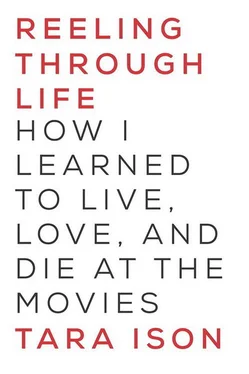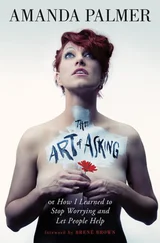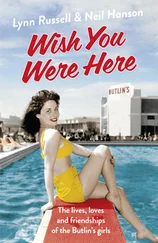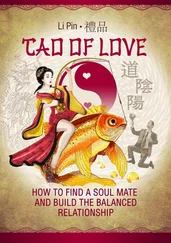In Cold Blood : The question of guilt or innocence is moot this time; Dick Hickock (Scott Wilson) and Perry Smith (Robert Blake) ultimately confessed to the killing of four members of the Clutter family, and we’ve seen the flashback of the killings in that remote Kansas farmhouse; there are six executions in this true crime story, and before Dick and Perry get their date with the noose, we are allowed to experience the terror of that family, tied up in separate rooms and ignorant of their fate until that first of four resonating gunshots: The father, then the son, then the mother, then the daughter. 74And it is Nancy, the sixteen-year-old daughter, especially, whose countdown terror increases exponentially with each gunned-down death on the list; the end of her own life happens three shotgun times, I count along with her, she must die three times until it is her own turn: “No, no, please don’t. . please,” she begs when that shotgun is at last pointed at her, it is her turn now, wait, wait, she is so young, there is Prom and horses to ride, boyfriends and cherry pie, and she turns her face away in that childlike, hiding-ostrich instinct: If I can’t see it, it maybe isn’t there; if it doesn’t see my face, maybe my existence can stay a secret, stay mine, just stay. . No.
When it’s Perry and Dick’s turn, Dick, the cockier of the two, is led almost cheerfully to the gallows in shackles, but his cocky façade slips as he climbs the steps. . and we cut to Perry, waiting, gazing out the window at the rain: “What time is it?” he asks, that most innocent, most existential question. Tick tick tick. We have always been allowed more intimacy with Perry, invited in to understand, or try to understand, the workings of his mind; Dick is the truly amoral psychopath, while Perry, the one who actually pulled that trigger those four times, is the broken, tortured soul, and he reminisces for us about his childhood, his broken and torturing father, his own cognitive-dissonant struggle with both love and hate. The rain-weeping window reflects as tears streaming down Perry’s face — a gorgeous effect that spares us the sympathy-begging ploy of having him cry real tears for himself, and so allows us to empathize for him without being told to. Perry is not worried about shoes or hairstyles or the visual markers of ladyhood (not that Barbara or Anne’s concerns are silly — these are the only props they are allowed, their femininity their only rhetorical tool); his final request is to use the toilet, for he has heard “when you hit the end of the rope, your muscles lose control. I’m afraid I’ll mess myself,” and it doesn’t get more relatably, humanly vulnerable than that. He is marched out in his own shackled turn, rapidly chewing gum, panicked. “Anything you want to say?” he is asked, and he says, “I think maybe I’d like to apologize. But to who?” obliquely acknowledging his own execution of four now-absent innocents. His feet are placed on the trapdoor, tied together; the noose is slid over; and Perry swivels his head to see the Hangman, nods at him in fraternal recognition: They are killers both. The Lord’s Prayer is read aloud—“Is God in this place, too?” Perry asks. The noose is necklaced around his throat, a black hood placed on his head, and through it we can see him shaking, see his mouth frantically working that sad chewing gum, we hear again the rapid heartbeat, beat beat beatbeatbeat . Again, my heart is beating, too, but this time I am jolted from its companionable thump when the trapdoor drops and we see the body fall and jolt, and we abruptly switch to an ethereal slo-mo swinging, soundless except for the last of Perry’s still-beating heartbeat slowing down. . is he flashbacking for himself right now, with the last of those oxygenating beats? About the Clutters, about his father, about Dick, about God? At what point does his strangled brain die of hunger and thirst, put that final period to thought?
Dead Man Walking : Matthew Poncelet (satanically bearded Sean Penn), on Death Row for the murder of two teenagers, has spent the film protesting his innocence, despite Sister Helen Prejean’s (mascara-free Susan Sarandon) insistence that the only path to God, to grace, to any hope of redemption or meaningful context for his life, is to accept full responsibility for his crimes. 75Minutes before his execution — again, the clock on the wall, the ticking down of time, of heartbeat, of breath — Matthew finally breaks down: Yes, I am guilty, yes, I am a rapist and murderer, yes. Sister Helen assures him that now, at last, he can die with dignity and no one can take that away from him, that he is a child of God. But for me his confession seems to be less about earning God’s love than about earning Sister Helen’s: “It figures I’d have to die to find love,” he tells her. “Thank you for loving me.” It is the human connection that humanizes him, not the spiritual; it is “Time to go, Poncelet,” a guard booms, “Dead man walking!” and despite Sister Helen’s reading the Bible aloud, or the priest who crosses him at the door to the death chamber, any meaningful context Matthew might now be creating for either his life or his death, to me, is not because God is with him; it is because Sister Helen is. He asks if she might touch him on this final walk; it is her approval that comforts him when he publicly confesses and asks forgiveness of the victims’ parents—“I hope my death gives you some relief”—it is her loving face he seeks as his last living vision of this world. He is still terrified as he is strapped down, still shaking as the rubber strap is tied on his arm and a thick needle slid into his vein, but this is ultimately a love story between two human beings, and how the experience of that love, especially at the moment of death, is perhaps the closest any of us might really get to not dying alone. Who will be with me when I die, I wonder. Whose is the last face I would like to see?
The Green Mile : The famous flames-and-screams, deliberately-botched-by-sadistic-guard electrocution occurs earlier in the film, but it is the final scene of “gentle giant” John Coffey (Michael Clarke Duncan) in the electric chair that serves as the creepy moneyshot death here. 76“It be all right, fellas. This here the hard part. I’ll be all right in a little while,” he tells the guards as he is strapped into Old Sparky; he speaks of the two little girls he was unjustly accused of murdering, talks understandingly about the hatred the witnesses must feel for him. His death is all about his empathy for others, his intention to console; when a witness spits out she hopes his electrocution “hurts like hell,” John responds with “I’m sorry for what I am.” He is crying when a guard approaches with a hood, asking, “Please, Boss. Don’t put that thing over my face. Don’t put me in the dark. I’s afraid of the dark.” His head is sponged, the electrodes put in place, he sings “Heaven. . I’m in heaven. .,” echoing his earlier delight at a Fred Astaire film — indeed, he is all angelic innocence and childlike fear, none of that messy emotional complexity allowed Barbara or Perry or Matthew or Anne. Spike Lee criticized the depiction of John as the “Magic Negro,” the black man whose one-note character exists primarily to serve as a catalyst for the white characters’ illumination, and John’s mysterious, magical life and climactic death serve the same function; it is head guard Tom Hanks’s trauma at carrying out the execution (his “last one,” he will tell us soon in the film’s coda) that we are meant to feel and identify with when the switch is flipped. I feel for John, but at a distance — I can’t quite enter into his consciousness, not because the circumstances of his life or death are so different from mine, but because it seems the filmmakers are not really all that interested in allowing us inside his psyche.
Читать дальше












